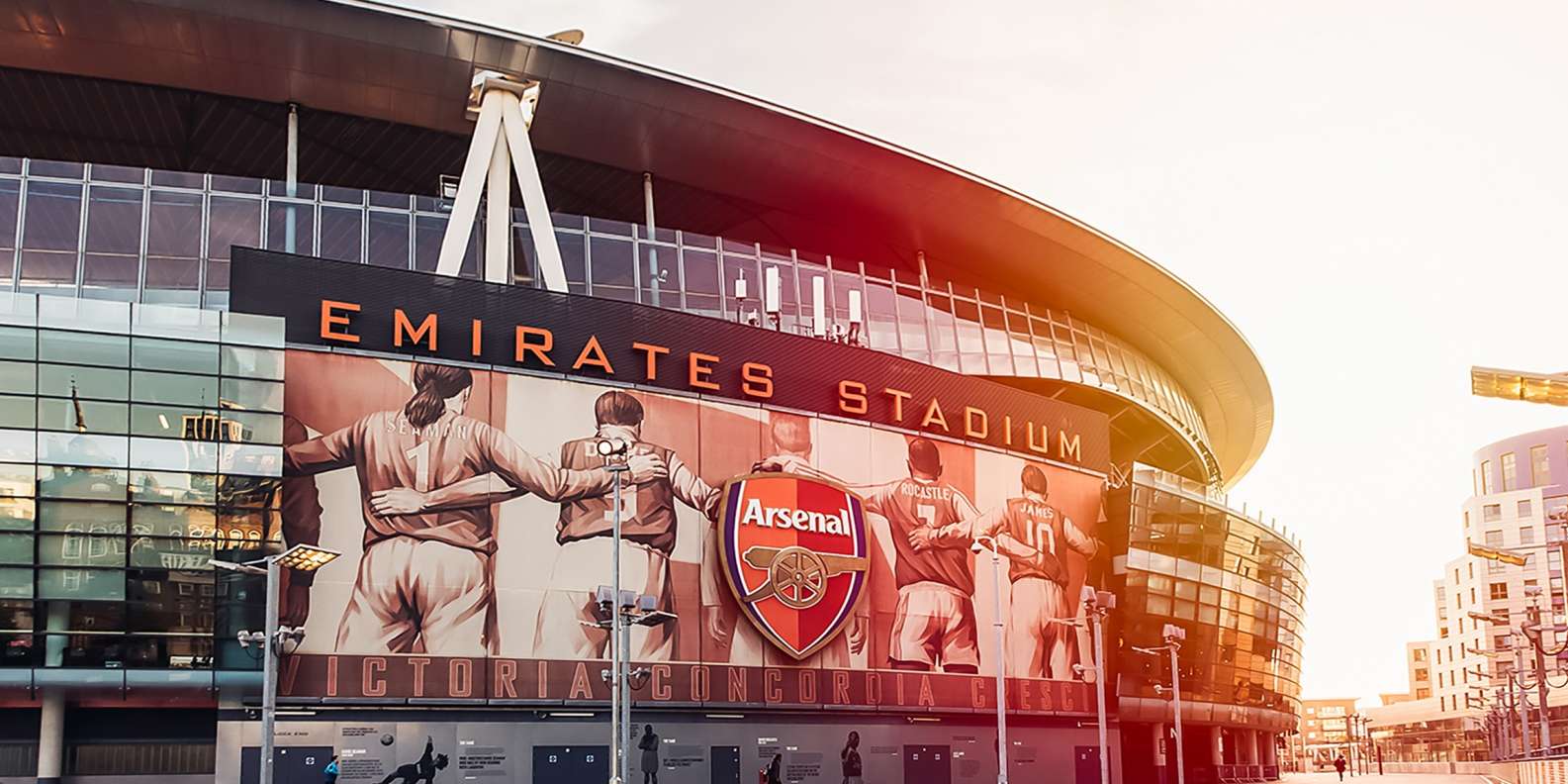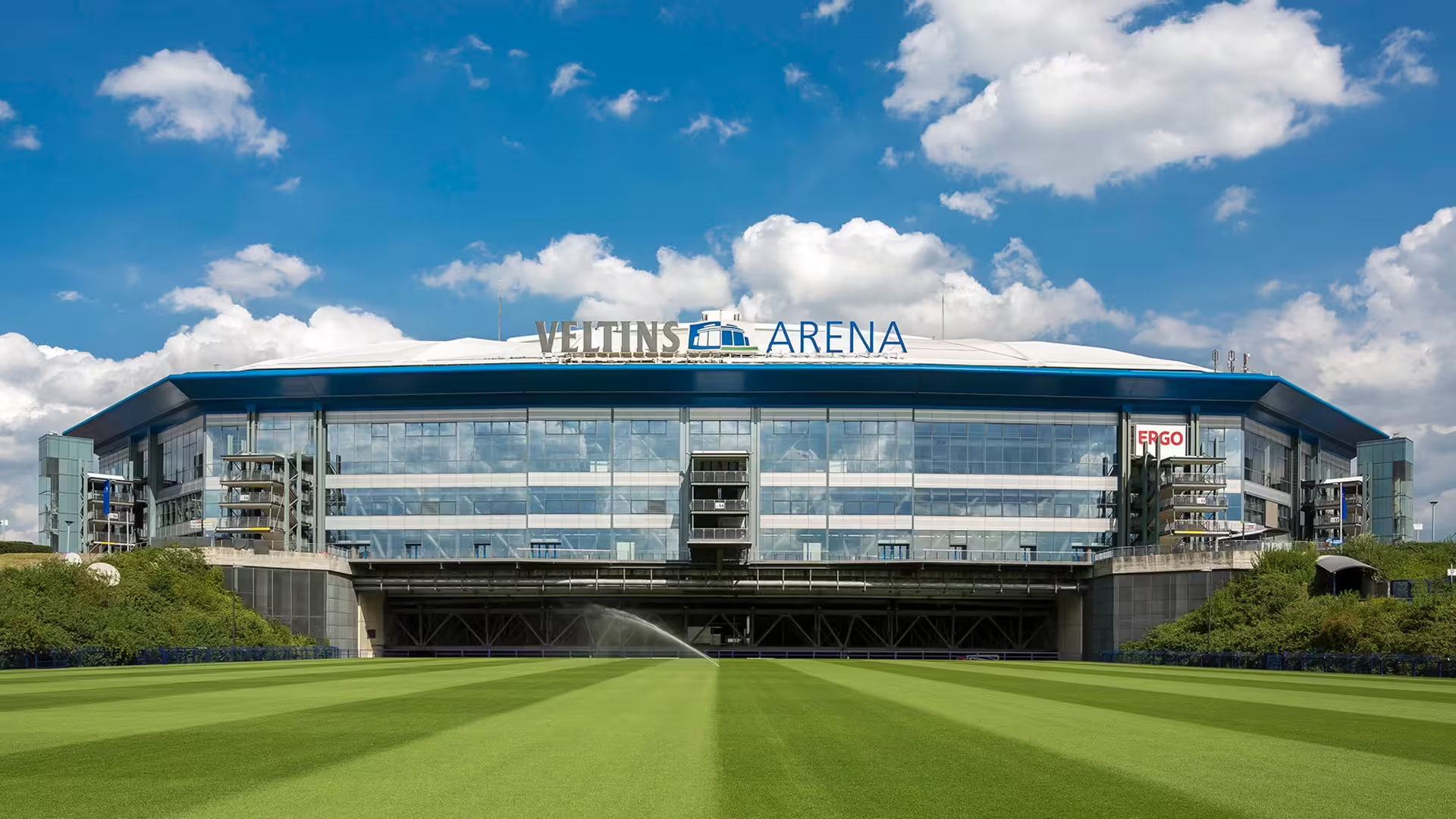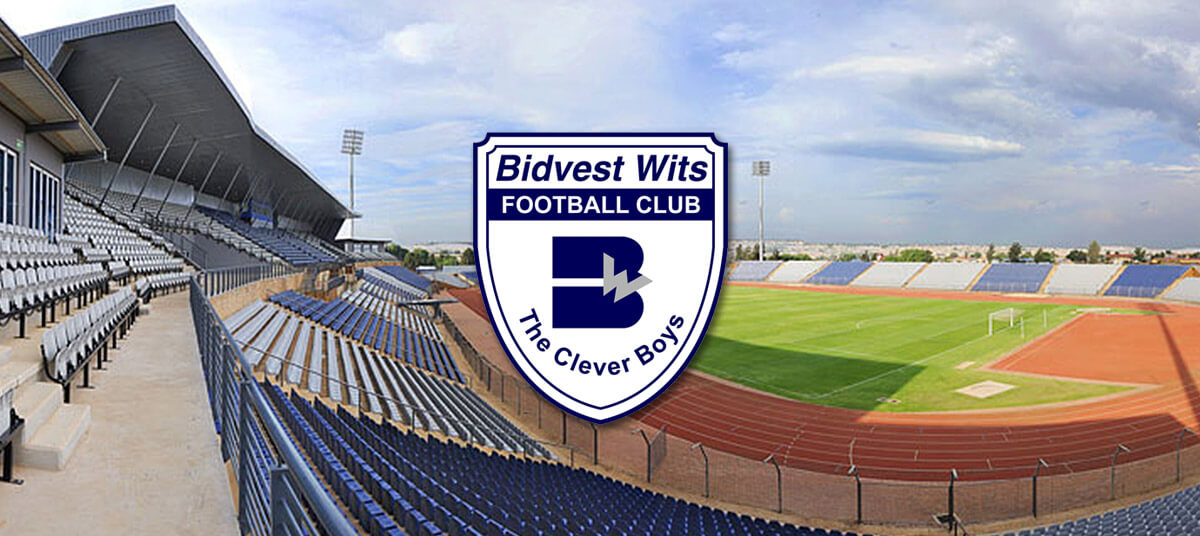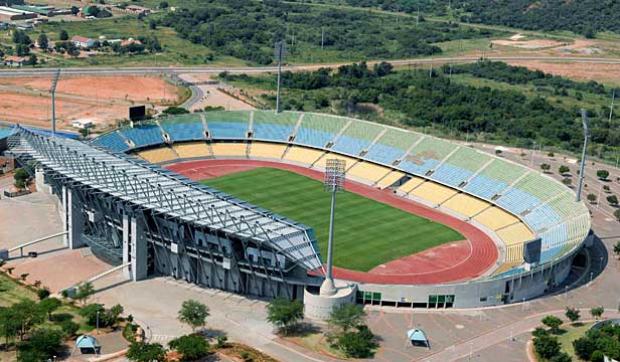Emirates Stadium, situated in North London, stands as the proud home of the Arsenal football club. Constructed between 2004 and 2006 as the successor to Arsenal’s former abode, Highbury Stadium, it was designed by Populous and boasts a seating capacity exceeding 60,000. Here, we delve into the stadium’s evolution, notable moments, and its profound significance in Arsenal FC’s storied history.
Emirates Stadium timeline
- 1999: Arsenal began considering building a new stadium near Highbury, eventually settling on Ashburton Grove.
- 2002: Construction commenced but faced delays and cost increases.
- 2004: Emirates secured naming rights, with a deal estimated at £100 million.
- 2006: The stadium was officially opened on October 26, 2006, by Prince Philip, Duke of Edinburgh.
- 2006-07: Emirates hosts its first season of Premier League matches
- 2008: Bruce Springsteen holds a performance in the Emirates Stadium, making it more than just a football venue.
- 2012: Coldplay lights up Emirates Stadium with their ‘Mylo Xyloto’ tour.
- 2019: Emirates Stadium celebrates hosting over 700 Arsenal games.
- 2023: The Emirates, or Emirates Stadium, continues to remain an iconic landmark, hosting football games, concerts, and events.
Origins and Early Years (1886-1913)
The roots of Emirates Stadium can be traced back to the inception of the club in 1886. Originally founded as Dial Square, the team commenced their football journey by playing matches across different grounds in Southeast London. However, a significant milestone occurred in 1913 when Arsenal made a pivotal move to Highbury Stadium. Designed by the esteemed architect Archibald Leitch, this stadium boasted a capacity of 38,419, becoming the cherished home of the club for the subsequent 93 years. It was within the historic confines of Highbury that Arsenal experienced a notable rise in prominence during the early 20th century, shaping the foundation of the club’s illustrious history.
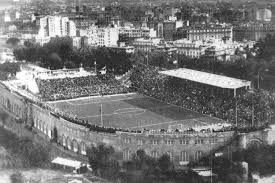
The Highbury Era (1913-2000)
Highbury Stadium stands as a significant chapter in Arsenal’s storied history. Throughout this era, the stadium underwent notable transformations, including the construction of the iconic art-deco East and West Stands. Guided by the legendary manager Herbert Chapman, Arsenal flourished during the 1930s, securing multiple league titles and FA Cups, marking a golden era for the club. Following the upheaval of World War II, the post-war years witnessed the emergence of football luminaries such as Ted Drake, Cliff Bastin, and Charlie George, who became synonymous with the illustrious days of Highbury.

Arsène’s Era: Early 2000s
In the early 2000s, Arsenal FC embarked on an ambitious journey under the leadership of Arsène Wenger. With Wenger at the helm, the club pushed the boundaries of football, aspiring to achieve greatness on and off the pitch. As part of their ambitious vision, Wenger proposed the idea of constructing a new, larger home for the club—one that would reflect Arsenal’s soaring ambition and leave a lasting legacy for generations to come.
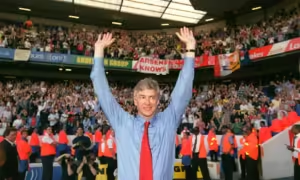
Farewell to Highbury: 2005-2006
In 2006, Arsenal bid farewell to their iconic home of 93 years, Highbury, as they embarked on a monumental shift to the state-of-the-art Emirates Stadium, situated in Holloway, London. The decision to move was prompted by the club’s need for a larger and more modern venue to remain competitive with other top clubs in the footballing world. Designed by Populous, the new stadium, Emirates Stadium, boasted an impressive capacity of 60,704, providing enhanced facilities for both fans and players. The relocation marked a significant milestone in Arsenal’s illustrious history, symbolizing their commitment to sustained success and financial stability in the ever-evolving landscape of football.

Expansion and Renovations: 2006-2010
Following its inauguration, Emirates Stadium embarked on a series of expansions and renovations aimed at bolstering its capacity and amenities. These initiatives sought to meet the escalating demand from fans while enhancing their overall experience. The projects included augmenting seating capacity and upgrading facilities such as hospitality suites, food and beverage outlets, and fan engagement areas. Arsenal also prioritized the integration of cutting-edge technology and infrastructure to ensure that the stadium remained at the forefront of modern sports venues.
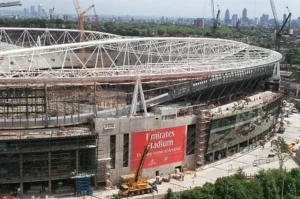
Legacy and Community Involvement: 2010s to present
Emirates Stadium has not only been a venue for Arsenal matches but also a hub for community engagement and social impact initiatives. With over 700 Arsenal matches hosted at the stadium, it has become more than just a sports arena. The club has extended its reach into the local community by organizing various programs and events aimed at youth development, charity fundraising, and education. These initiatives have included youth development initiatives, charity matches, and educational workshops, all hosted within the stadium premises. Additionally, Emirates Stadium has opened its doors to cultural events, including concerts by renowned artists like Bruce Springsteen and Coldplay, making it a vibrant space for community gatherings and cultural experiences.
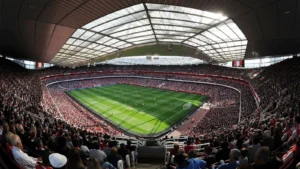
Emirates Stadium Construction
In 2004, architects at HOK Sport, now Populous, embarked on a monumental task: to materialize Arsène Wenger’s vision of a stadium embodying the Arsenal spirit and making the fans feel right at home. They delivered an architectural marvel. The sweeping, curved design of the stadium was a masterpiece of modern architecture, but it was more than just aesthetics. They integrated innovative techniques like the translucent polycarbonate roofing, a first in the UK, which allowed natural light to flood the pitch.
The seating layout was meticulously crafted with the fan experience in mind. Designed to ensure there’s not a bad seat in the house, all seats offer unobstructed views of the football pitch.
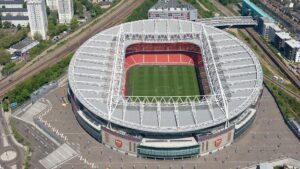
Emirates Stadium today
In the present day, Emirates Stadium transcends its role as merely a football venue; it stands as a vibrant testament to Arsenal’s illustrious heritage. Within its grandeur, this iconic structure has borne witness to the highs and lows of the club’s journey, immortalizing unforgettable triumphs and enduring defeats. More than a mere home ground, Emirates Stadium offers a holistic experience for fans, boasting a plethora of amenities including expansive food courts, a bustling club shop, and an enriching museum. Beyond football, the stadium has played host to a diverse array of events, from international matches to captivating concerts. For aficionados of Arsenal or admirers of the beautiful game, a visit to Emirates Stadium isn’t just an option—it’s an essential pilgrimage.

Emirates Stadium Stands: Where Legends Unfold
The Emirates Stadium stands proudly as the home of Arsenal Football Club, boasting a rich tapestry of history and a stage where footballing legends are made. Here’s a glimpse into the iconic stands that adorn this legendary venue:
- North Bank Stand: Revered as one of the heartbeats of Emirates Stadium, the North Bank Stand is where fervent Arsenal supporters congregate to chant, sing, and cheer their beloved team to victory. With its towering presence and sea of red and white, this stand embodies the spirit and passion of Arsenal faithful.
- Clock End Stand: Standing tall opposite the North Bank, the Clock End Stand pays homage to Arsenal’s storied past with its iconic clock that once adorned Highbury Stadium. This stand exudes tradition and nostalgia, serving as a beacon of hope and inspiration for both players and fans alike.
- East Stand: Majestic and imposing, the East Stand offers a panoramic view of the Emirates Stadium, providing spectators with an unrivaled vantage point to witness the drama unfold on the pitch. From here, fans can soak in the electrifying atmosphere and revel in the sheer brilliance of Arsenal’s performance.
- West Stand: The West Stand epitomizes luxury and sophistication, offering premium hospitality and VIP seating options for discerning guests. From corporate suites to plush lounges, this stand caters to the needs of those seeking an elevated matchday experience amidst the excitement of Emirates Stadium.
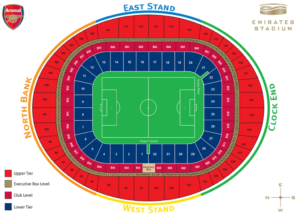
Each stand at Emirates Stadium tells a unique story and plays a vital role in shaping the collective identity of Arsenal Football Club. Together, they form the backdrop against which unforgettable moments are etched into the annals of footballing history, making Emirates Stadium a true temple of the beautiful game.
Discovering Emirates Stadium:
Guided Tour Experience
Exploring Emirates Stadium is an essential part of any visit to this iconic venue. Led by experienced guides, the tour offers a comprehensive look into the history of Arsenal and the stadium itself. Lasting approximately 90 minutes, the tour provides fascinating insights and behind-the-scenes access to areas typically off-limits to the public.
Highlights of the Emirates Stadium Tour
One of the standout features of the tour is the exclusive access to the changing rooms utilized by Arsenal players. Visitors have the chance to step into the same space where athletes prepare for matches, offering a glimpse into the inner workings of a professional football club’s locker room.
The tour also includes a visit to the pitchside area, allowing visitors to stand on the revered turf and soak in the electric atmosphere of the stadium firsthand.
Another memorable aspect of the tour is the opportunity to walk through the player’s tunnel. Here, visitors can follow in the footsteps of Arsenal players as they emerge onto the pitch. Adorned with club crests and player names, the tunnel provides an exhilarating and unforgettable experience for all who pass through it.

Legends’ Statue and Museum
Within the Emirates Stadium premises stands a statue honoring Arsenal’s legendary manager, Herbert Chapman, whose leadership propelled the team to success during the 1930s. Positioned outside the stadium, the statue serves as a beloved landmark where fans often gather to capture memorable photographs.
Additionally, the stadium houses a museum dedicated to Arsenal’s rich history. Showcasing an array of trophies, memorabilia, and interactive exhibits, the museum offers visitors a comprehensive journey through the club’s illustrious past.
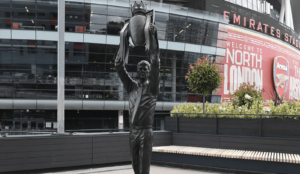
Arsenal Store: Your Gateway to Club Merchandise
No visit to the Emirates Stadium is complete without exploring the Arsenal store, a haven for football enthusiasts seeking quality merchandise. Boasting an extensive selection, the store offers everything from shirts and scarves to hats and accessories, ensuring fans can proudly display their allegiance to the club. For a personalized touch, visitors have the option to acquire bespoke items, adding an extra layer of uniqueness to their cherished souvenirs.

Dining Options at Emirates Stadium
Indulge your taste buds with an array of dining options available at the Emirates Stadium. From fast food to fine dining, the stadium caters to every palate with its diverse selection of restaurants, cafes, and bars. Whether you’re craving international flavors or classic stadium fare, there’s something to satisfy every taste. Whether it’s a leisurely pre-match meal, a refreshing drink, or a quick snack during halftime, visitors can enjoy a culinary journey while immersing themselves in the electrifying atmosphere of the stadium.
Exploring North London: Attractions and Accommodation
Situated in the vibrant heart of North London, the Emirates Stadium offers visitors easy access to a myriad of nearby attractions. Explore the bustling local area, where you’ll discover iconic landmarks such as the renowned Finsbury Park and the eclectic Camden Market, both just a stone’s throw away from the stadium.
For those planning an extended stay, North London boasts a diverse range of accommodation options to suit every budget and preference. From budget-friendly hostels ideal for backpackers to luxurious hotels offering premium amenities, there’s something for everyone in the vicinity of the Emirates Stadium.
Diverse Utilization of the Stadium
Beyond its primary role as a venue for sporting events, the Emirates Stadium boasts a versatile range of uses, further solidifying its status as a multifunctional space. Notably, it has become a favored location for hosting conferences, epitomizing Anglo-French collaboration. A significant example of this occurred on March 27, 2008, when it provided the backdrop for a meeting between French President Nicolas Sarkozy and British Prime Minister Gordon Brown.
Moreover, the Emirates Stadium has served as the venue for audition rounds of popular television shows such as The X Factor, Britain’s Got Talent, and Big Brother, showcasing its adaptability to diverse entertainment formats.
In 2016, the stadium showcased its culinary side by hosting Celebrity Masterchef, where competitors vied to impress club staff with their culinary skills, adding a unique dimension to its repertoire of events.
Expanding its capacity to accommodate larger audiences, the Emirates has played host to several notable music performances. Bruce Springsteen and the E Street Band marked their debut performance at the stadium on May 30, 2008, followed by an encore the following evening.
In June 2012, British band Coldplay made history by selling out three consecutive gigs at the Emirates within 30 minutes of ticket release, setting a precedent for concert attendance. This achievement underscored the stadium’s allure as a premier music venue.
The trend continued in June 2013 when Green Day broke attendance records at the Emirates during their performance. The momentum of high-profile concerts persisted, with The Killers’ Mirage tour featuring two sold-out performances at the Emirates on June 3rd and 4th, 2022, further cementing its reputation as a sought-after destination for music enthusiasts.
Emirates Stadium Location and Transportation
Public Transportation
- London Overground or Underground:
- Arsenal Station: Situated in Zone 2 on the Piccadilly Line, a mere three-minute walk from the stadium.
- Finsbury Park: Located in Zone 2 on the Victoria Line, approximately a 12-minute walk from the stadium.
- Highbury & Islington: Also in Zone 2 on the Victoria Line, about a 12-minute walk from the stadium.
Tip: Consider parking at northern suburban stations before taking the train to one of the mentioned stations to avoid congestion.
Important Note: Eastbound trains at Holloway Road (Piccadilly Line) will not stop before Arsenal games due to exit-only operations.
- National Rail:
- The stadium is 3.5 miles from London King’s Cross station (KGX), located at Euston Road, NW1 2SA.
- It’s also 3.8 miles from London Euston station (EUS), situated at Euston Road, NW1 2AE.
- Bus:
- Routes 30, 17, 91, 259, and 393 serve both Holloway Road and Highbury Corner, near the stadium.
- Taxi:
- Contact Yellow Cars at (20) 7609 4444 for taxi services.
Private Transportation
- Google Maps View:
- For a visual of Emirates Stadium, click here.
- Major Routes:
- From the North: A1, A503, M1 passing through Edgware and Highgate.
- From the South: Pass through the City of London and Clerkenwell on the southbound A1.
- From the East: A10, passing through Stratford and Hackney via A12 and A406.
- From the West: A40 and A501, traveling through Central London.
